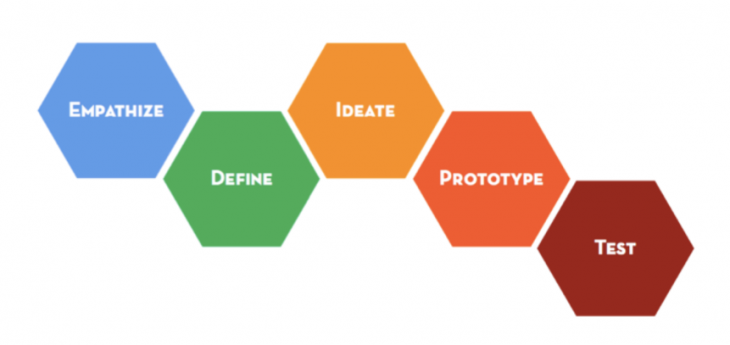Learning about learning
My neighbor Paul is a pretty smart guy so we managed to get it out of the car after a lot of pulling, pushing and shoving. He had a dolly to make it easy to get upstairs, which was a great idea until we got to the door. It didn't fit. HURDLE #2 - Getting it to where I needed itBeing the smart guy that he is, Paul suggested we bring it upstairs in pieces, so we began dissecting the box and its contents. Who knew that this puppy would have a GAJILLION pieces! Kudos to the engineers in charge of packaging though. Between the masonite stablilizers, and lots of styrofoam, they'd sandwiched something that covered most of my walkway into a 36"x40"x6"box. Hurdle #3 - Putting it all TogetherNow the fun begins. Putting it together. Easier said than done! It came with 5 pages of illustrated directions. All of the pieces were numbered with little stickers, and the numbers matched the diagram in the directions. Easy peasy, right?
WRONG.
0 Comments
When one is used to working and cultivating a collaborative group that readily shares information, it is a rude awakening to return to the land of silos and secrets. I recently worked on a project where command and control was the [unspoken] expectation, and as part of my needs assessment, I DARED speak with employees outside of L&D and was taken to task for it. "We don't do it what way around here. You must ask permission to speak to people in the business lines." Huh? I thought we were all on the same team here. The people I spoke to were fine with my inquiries, and I gathered some robust insights, but since I hadn't played "Mother May I?" I was reprimanded with an attitude of "How DARE you!" and those insights, I'm sure, will wind up in a dust bin. It puzzles me. What are you so afraid of, folks? The Way Things Could Work
While his model is about ever learning and always connecting to build a network on a personal level and the implications that has within organizations, Seek > Sense > Share functions well to describe what a needs assessment should be. It's an investigation (seek), looking for trends, making sense of them, then sharing your findings so that a solution can be developed to solve the problem at hand. Design thinking spends tons of time examining things first, ensuring that gaps are identified, and a solution created to fill them. Doing so ensures the right problem is solved.
Alas, not in this organization. It appears that the solution has been crafted before the problem has truly been uncovered. When you exist in a world where everything is guarded close to the chest it's really easy for mediocrity to perpetuated. You miss the perspective of the outsiders who almost always have valuable insights for you. When your focus is wrapped up on adherence to process, it's easy to forget what the process is for. When colleagues become snitches and tattle to ensure compliance with said processes, your problem is bigger than you think. When you stop looking around, it's easy to function on the hamster's wheel, always running and never getting anywhere. I shudder, shake the dust from my feet, and return to normalcy. It's a much better place. Lessons from the LearnerI've just finished six days of intentional learning. From the time my feet hit the floor till I collapsed on my pillow, I was engaged in discovery about learning. I'm pooped! Most of that time I was in Orlando at the Association for Talent Development International Conference and Exposition learning with and from 10,000 people who work building learning for others. I've been at this for twenty years when I made the move from teaching to training. I've seen the name of what we do evolve over the years. Now we call it talent development. Whatever you call it, it's about designing learning to solve business problems. I learned a ton over the last few days. Here's a recap of the highlights. Solving Business ProblemsTraining is often viewed as a cost center in business because we don't generate revenue. However, if we do our job the right way, we become a valued business partner, enabling employees to do their job better and learn new skills. Foundational to that is linking the goals of what we do to the problems businesses need to solve.
Performance Consulting is the process of uncovering business problems at the root of what is presented as a training need. It's about examining things systemically, to look for the causes of the problem, which may be related to coaching and feedback issues, process problems, or even a problematic environment. The key is that the business needs inform the performance needs the individuals must do. We uncover those needs through questioning. Dick Handshaw provides an excellent listing of questions on his website. Aligning our training to those uncovered needs ensures we solve the right problem that impacts business results. Dick Hanshaw elaborated on the role of instructional design to create the learning solution for the problem. One concept that he has that I've not seen in other models is the blueprint, where everything is laid out prior to production. There is great wisdom in this. Building Strategic Linkages: Map and Measure Your Learning StrategyAjay Pangarkar Handout Link In this workshop we also talked about meeting business goals but by looking at things strategically. We looked at how business maps things out: Then we looked at how this is measured, using a balanced scorecard approach: My takeaway from this session was to look for the metrics being used to measure in the business and see how we might leverage them in training, and to focus on more alignment of learning goals with business goals. Innovating Learning Through Design Thinking Interview TechniquesAmanda Chavez and Katarzyna Siedlecki Handout Link
Depending on the model, you'll get pictures like these to depict design thinking. The one on the top is the model used at Stanford, and the one on the bottom is the model used at Booz Allen Hamilton presented in the workshop. The principles are similar in the world of instructional design, but with design thinking the ideate process is a bit more fluid and creative. I loved the idea of doing this with the subject matter experts that I work with to toss around ideas to generate a better end product. In this workshop and a similar one I attended during the week, we used mindmapping, post-it notes, and brainstorming techniques as part of the problem definition, and solution generating process. I definitely want to experiment more with this. If you want to know more, there's a great infographic at the Design Management Institute. I came, I Learned, I presented. I was able to share some of my expertise with people in my session on Ubiquitous Learning: Leveraging the Strengths of Online Learning. Having done all of the development work I did for the college over the past five years, I've seen some things that work well, and that really don't in online learning, and was able to show some examples of things that I've used with great success. Online learning is everywhere, and we miss out on a great opportunity not to leverage it. I had several international folks come up to me after the session to inquire if I'd fly to their company to present my workshop. We shall see where that goes. For now, we continue to learn. I spent several hours this evening going through the handouts for the sessions I was unable to attend. That's one of the benefits of online learning and access: I was able to extend the learning another day, and through mediums like this blog, share ideas with others to continue to learn. I love that. Don't you? |
Jean Marrapodi
Teacher by training, learner by design. Archives
January 2018
Categories
All
|
Conference
|
Company
|
|














 RSS Feed
RSS Feed